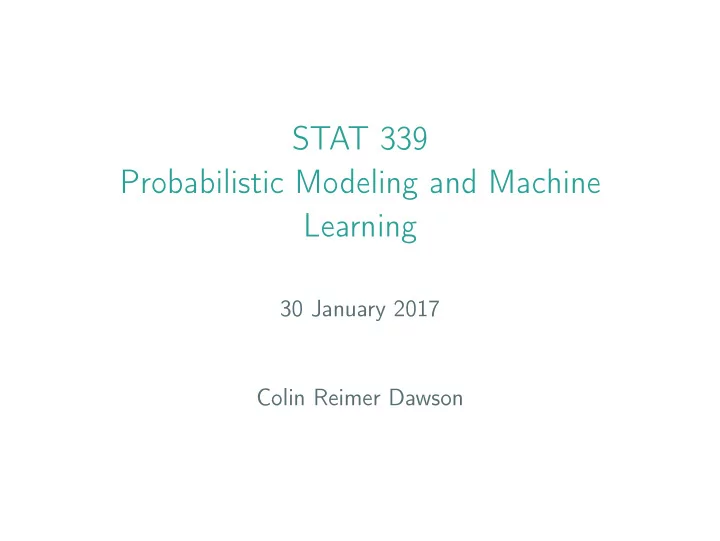

STAT 339 Probabilistic Modeling and Machine Learning 30 January 2017 Colin Reimer Dawson
Outline Data Science and Machine Learning Types of Learning Supervised Learning Unsupervised Learning Discovering Model Complexity Course Outline
Some Cool Things you can do with data Thanks to David Shuman at Macalester College for this slide
What is Machine Learning? "A computer program is said to learn from experience E with respect to some class of tasks T and performance measure P if its performance at tasks in T , as measured by P , improves with experience E ." — Tom Mitchell
What is Machine Learning? "[Machine Learning is a] field of study that gives computers the ability to learn without being explicitly programmed." — Arthur Samuel
Statistics, Computer Science, and Machine Learning Machine Learning
Types of Learning ◮ Supervised Learning: Learning to make predictions when you have many examples of “correct answers” ◮ Classification: answer is a category / label ◮ Regression: answer is a number ◮ Unsupervised Learning: Finding structure in unlabeled data ◮ Reinforcement Learning: Finding actions that maximize long-run reward (not part of this course)
Supervised Learning
Supervised Learning with a Probabilistic Model ◮ Training data: { ( t i , x i ) } n i =1 ; t i = label, x i = features. ◮ Fit a model of all of the features: P ( x , t ) , or P ( t | x ) ◮ Testing: Assign P ( t new | x new , Model )
Data in Higher Dimensions
Data in Very High Dimensions
Aside: Feature Extraction (“Eigenfaces”)
Finding Clusters ◮ Clustering: Grouping data into categories without any “ground truth” information ◮ Example Application: Modeling people’s taste in movies
Model-Free Clustering Model-free example: Given a distance metric, maximize distances among cluster centers; then assign points to closest center.
Clustering with a Probabilistic Model 1 (a) 0.5 0.2 0.3 0.5 0 0 0.5 1 Output: A set of cluster weights and a probability distribution for each cluster
Recommend
More recommend